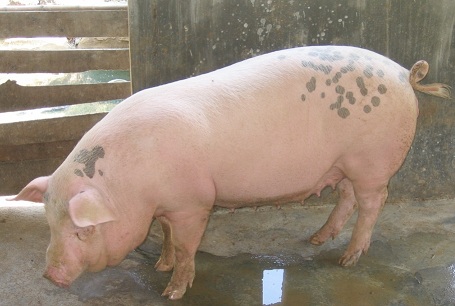Pigs and applications in medicine - biology
The pig is a familiar animal for everyone. Pork is a popular food in daily meals, especially on the occasion of Tet holiday. In the field of bio-medicine, pigs also have many useful applications for humanity.
Applications in pig medicine - biology
Using grafted pig organs for humans
US scientists have conducted many studies that can genetically modify the organs of pig organs , which are capable of preventing viruses that can infect humans.

Illustration.
Now scientists have done a lot of research to neutralize the pig organ virus, if it can be used to replace human organs but no research has been successful.
Gene transformation for pigs that can be used for human transplantation is considered a new step in the science of organ transplantation among species.
Accordingly, a virus, scientifically known as PERV, has been identified for more than a decade as a virus that will infect humans if they enter a patient's body.
And the problem involving more than 60 PERV viruses has been resolved by the medical team Harvarg of Bostom.
The results were reported in the scientific workshop of the US National Academy of Sciences and were published in Nature on October 9.
According to the new study, pigs' hearts, kidneys and livers can be introduced into the human body if they have gone through the process of turning hills, they are internal organs that are close to human size and can be transplanted.
However, this study still needs more time before it can be implemented in practice.
Use pig skin to treat burns
Doctors at Hong Cong University have successfully used pigskin to temporarily cover the burn until the victim's skin grows again. They use fresh pigskin as ' mantle' for about 18 days before the body is excreted and it works to prevent complications. After that, doctors used a very common technique in the United States to breed different thicknesses of skin from the patient's own skin cells. These pieces of skin will be used to cover the wound for the burned person.
Luminescent pig

In early 2006, Taiwanese scientists announced the breeding of three pigs that could glow in the dark, using jellyfish DNA . They can emit green light from head to tail, from the inside out, including internal organs like heart, liver, lungs . According to the research team, the fluorescent pig body works normally. These luminescent pigs are used to study human diseases.
If their stem cells are injected into other animals, scientists can easily monitor and identify the cell. Taiwanese scientists plan to breed 3 pigs on a normal pig to create new breeds. And so there will be more varieties of luminescent pig used for biomedical purposes.
Genetically modified pigs are capable of treating cancer
MGenbio Institute and Chungnam University of Korea have collaborated to research and successfully develop genetically modified pigs that can produce proteins that can fight cancer. This is the first time that cloned scientists can produce substances containing GM-CSF factors. This factor has been shown to treat leukemia and anemia or those with low white blood cell counts during cancer treatment.
- Application of molecular biology in medicine
- Techniques of raising pure boar
- Decoding genes for breeding pigs for medicine and livestock
- Misunderstandings about pigs that people have
- Controversy over the name
- Pigs are smarter than dogs and chimpanzees?
- Pigs have fur like sheep
- Nanotechnology and applications
- Theory of Lunar Medicine and Biological Moon
- China created mini genetically modified pigs, priced at 36 million / head
- Avian influenza virus variants on pigs and cats
- 3,000 pigs died drifting in Shanghai
 Why do potatoes have eyes?
Why do potatoes have eyes? 'Tragedy' the world's largest carnivorous life: Death becomes ... public toilet
'Tragedy' the world's largest carnivorous life: Death becomes ... public toilet Tomatoes were once considered 'poisonous' for 200 years
Tomatoes were once considered 'poisonous' for 200 years Detecting microscopic parasites on human face
Detecting microscopic parasites on human face